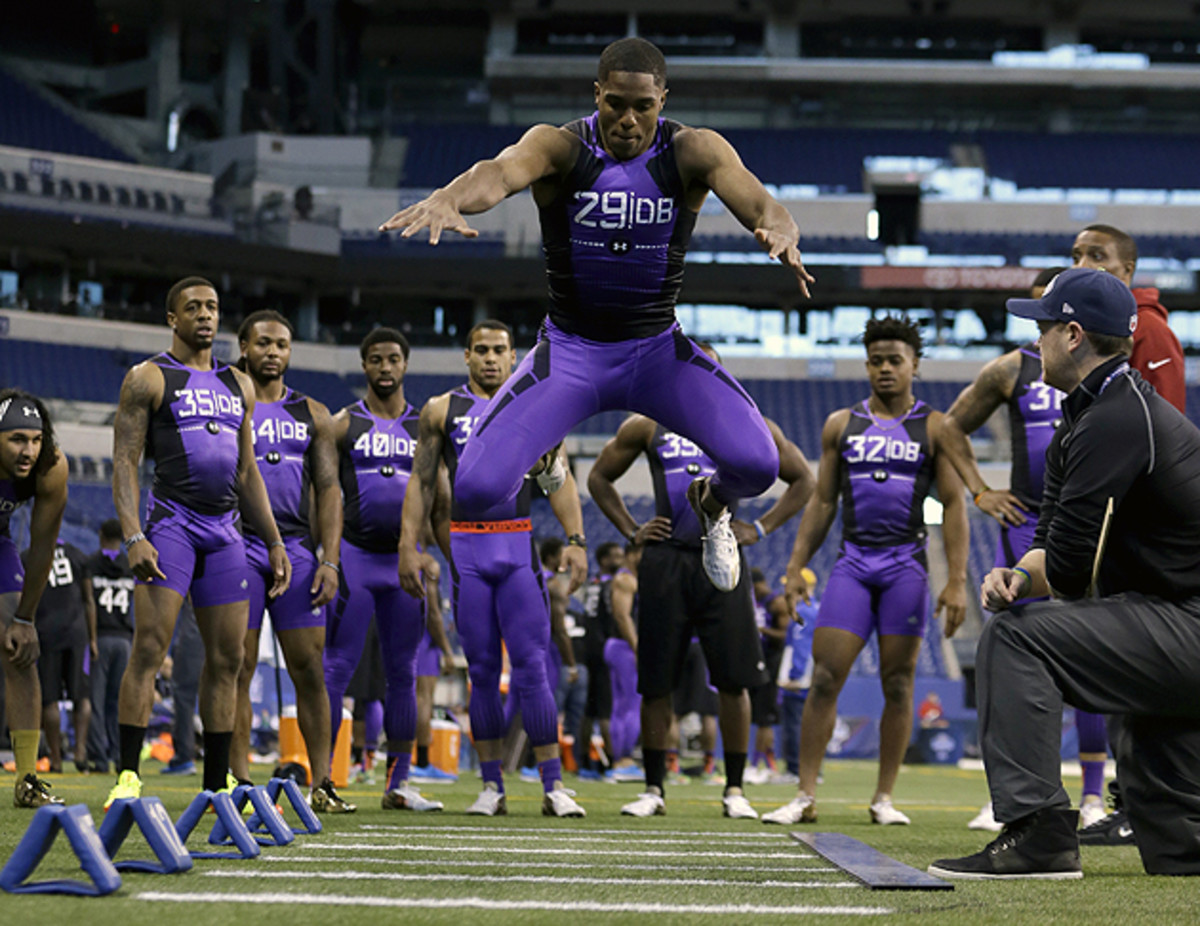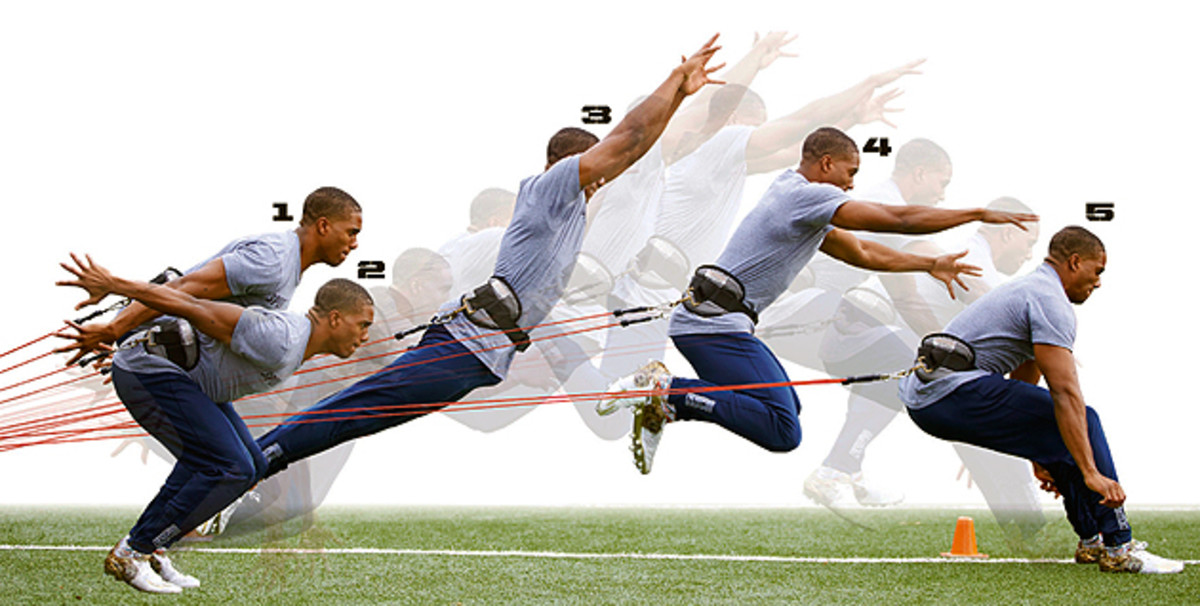Training with Byron Jones: Breaking records and rising up NFL draft boards

When University of Connecticut cornerback Byron Jones walked up to the line for his second broad jump attempt at the 2015 NFL Combine, he had one thing on his mind: Beat Chris Conley. The Georgia wide receiver had landed an 11'7" just 48 hours ago and Jones' first jump was two inches short. But after watching a replay of NFL Network anchor Rich Eisen run the 40-yard dash just minutes earlier, Jones felt relaxed. He was ready.
"Anytime you’re in a building with all of the GMs, head coaches and scouts watching you, you’re definitely a little nervous, but as a competitor its what you love to do,” says the 6'1", 199-pound Jones. “I knew I could beat the record, but I didn’t know how much.”
Jones’ numbers were huge: a 12’3” broad jump (shattering both the combine and world records) and 44½ inches in vertical jump (just short of the year’s best of 45 inches.) And at UConn’s Pro Day just last week, Jones ran 40-yards in 4.36 seconds—the second-best time of any cornerback prospect at the Combine.

That sort of explosiveness indicates that Jones has great genetics, but also that he has worked hard to make the most of his natural abilities. Jones spent the weeks before the combine training at the EXOS facility in Pensacola, Fla., lifting weights and partaking in a movement training program to hone his form and boost his burst.
"Once we build a strong foundation, we strengthen the movement patterns using forms of resistance—sleds, bands, prowlers—and then build explosiveness and speed," says Jones’ trainer Stefan Underwood.
A typical session began with a dynamic warm-up—skips, side shuffles, bounding and balance stretches that resembled yoga poses. Like a sprinter coming out of the blocks, Jones also worked on his acceleration and drive phase, or the piston-like action of the legs during the first steps of a sprint, using resistance bands and belts.
Training With: Workouts and training tips from professional athletes
"When you're in the three point stance, you have to keep your body low and maintain that drive coming out your first 10 yards," says Jones, 22. "The resistance forces you to maintain a lean [in your body] and drive as far as you can."
The concept behind Jones's training is "post-activation potentiation"—combining high-load strength movements (a squat with weights) with similar, lightweight plyometrics (a squat jump with no weight).
"Having an athlete perform a resisted rep, rest and then follow that with an unresisted rep can produce an increase in power output and explosiveness," says Underwood.
At his request, Jones' workout also included fitness drills, where the goal was to achieve a certain number of reps in a given time and react to visual stimuli (a person with a football)—all while tuning out any verbal distractions.
SI's Chris Burke thinks Jones secured a spot in the second round, but he knows it will come down to his intangibles.
"I think my biggest asset is my intelligence, understanding both defensive and offensive concepts,” he says. “I don’t think the [jumping] measurements have a lot to do with football—but I expect to use my athleticism to my advantage.”
Jones says he’s prepared to improve on weaknesses like his coverage skills and vocal leadership, but he still believes he fits the mold of an NFL cornerback. He’s ready to make the jump.
When working on everything from acceleration and drive to jumps, Jones uses a system of pulleys and bungees called the Vertimax to do three sets of four jumps (two resisted, two unresisted) with one minute in between. Below he shows off his form.

1. With feet shoulder-width apart, stretch your arms behind you and rise onto the balls of your feet.
2. Begin to swing your arms forward and bend your knees and hips.
3. Drive your legs off the ground and simultaneously throw your arms up and forward.
4. Once airborne, extend hips up and forward, and throw your feet forward to keep momentum.
5. Land flat-footed and absorb the impact by bending the knees and hips.
